Sep 3, 2021 | Native Hope
"If you go to the top of a mountain, you can see [the horizon line] — here is the balance between the earth and the sky. Here they meet. Point your finger to the horizon and follow it," Starr Chief Eagle demonstrates during her TEDx Talk. "You will go all the way around (there may be a few trees or buildings in the way) – turn 360 degrees, and you will make a hoop. And, who is inside the hoop? You are! [The hoop] follows you wherever you go — constantly reminding you of the balance that you live in — your everyday life. [The hoop is] a reminder to respect each other." That respect equals balance. All of creation works in harmony.
Starr Chief Eagle, Lakota hoop dancer and cultural educator, knew she was different at a young age. At the school she attended, non-Native students made up most of the classrooms, and her teachers mispronounced her name as "Starr Chef Eagle." Students snickered — throwing off the balance she knew in her Lakota home. 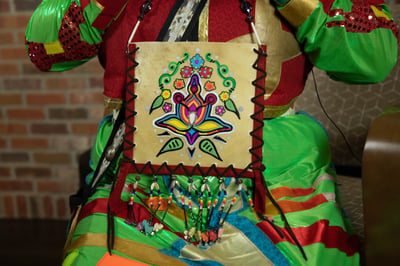
Balance in life is core to the Lakota. According to Starr's father and teacher, Dallas Chief Eagle, the hoop teaches balance. "As you grow older, well, you add more things to it — more teaching lessons on the circle of life," Dallas explains. "How well we take care of our own personal hoop, our spirit will determine how we dance with all those other hoops and spirits throughout our lifespan. It's something that my relatives knew a long time ago."
"I grew up with hoop dancing — ever since I was a baby,"
Starr smiles and continues. "My family has a picture of me in my baby walker with my first hoop. [But] when I was young, [hoop dancing] was never really something I chose to do — like many indigenous families, it is something that a family does together.
It brings them together in a positive way." Many indigenous families engage in various cultural activities: powwow dancing, beading, storytelling, language learning, drumming, singing and more.
Starr says she didn't fully understand why people told her that passing on the culture was important. "I didn't know what that meant until I learned the true history of this country — I learned that there are so many families that are not fortunate enough to have culture within their family." Her family gave the hoop dance to Starr as a gift, and she wants to gift it to those who haven't had her cultural experiences. "I want to be able to represent our people in a positive way. I want to make that positive change through the hoop dance."
The hoop dance is about balance, unity and respect, but it has several interpretations. Numerous tribes perform it. Across North America, dancers perform the hoop dance as a healing and storytelling dance. The dancers utilize up to forty hoops to create a visualization of creation stories and personal journeys. "The single hoop represents the cycle of life," Starr shares in a Tedx Talk at the University of South Dakota. "When our people [the Lakota] came to this world, they went up on a mountain to take a better look at our surroundings ... [we found that] nature itself was a balance. Father sky and Grandmother Earth (uŋčí makȟá) both had their part in taking care of the two-legged, the four-legged, the winged and the rooted. We recognized that we were now part of that process. That nature. That balance. So, it was our teachings that we respect one another — all nations."
Balance, unity and respect are the Lakota way: All are connected and part of nature. It is paramount to show respect for one another, especially for nature and humanity's role in its future. Starr reminds us, "We can learn from one another. We can learn from our human relatives and creation around us. Maybe [we can learn] from an owl and how it protects its family. Maybe there is a movement we can incorporate into our dance styles." It is essential to understand that the Lakota hold fast to the idea that if something is done in a 'good way' with positive energy, it has healing properties."
Starr grew up watching her father, Dallas Chief Eagle, dance. By combining Dallas's guidance and Starr's experiences, Starr developed her hoop dance and now dances with more than 20 hoops. However, it is not about how many hoops a dancer uses — it's about the story you share with those around you.
"In my hoop dance, I tell my own story. The first hoop is me being born," Starr illustrates. "The animals, the shapes, the creatures represent all the different stages of my life … everything I went through to be here today. The last and final creation represents my future goals — that person I am becoming." Starr continues to add more hoops as she experiences new things. She aims to build positive bridges by encouraging understanding amongst different cultures.
Education, an Essential Part of The Journey
Dispelling misinformation about her people is Starr's life and career goal as a performer, educator and cultural interpreter. The hoop is her vehicle as an artist, but also she has advanced her knowledge through formal education. "The indigenous culture was something I was passionate about. No one in my mother's family had ever attended college or thought about college, so it was a new process to figure out on my own."
For many Native Americans, this is the case. Starr's perseverance serves as an example for all post-secondary degree hopefuls. Data indicates only 16% of Native Americans attain a bachelor's degree. Starr earned an associate degree and bachelor's degree in Lakota Studies. "I do feel the way to move forward and to move positively to create change is to educate myself, so I can educate others on our indigenous culture. We can get rid of those stereotypes and get rid of that incorrect information." She feels it is essential to continually learn about her heritage and encourage others to do the same.
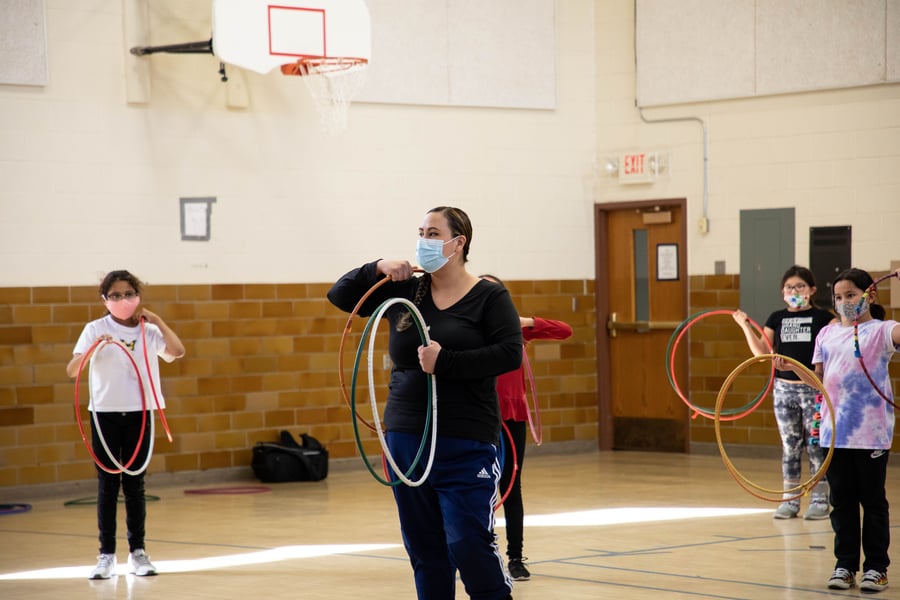
Once Starr realized educating others was her path, she started presenting to various groups.
For the past eight summers, Starr delivered performances and education to crowds at the Crazy Horse Memorial and Mount Rushmore National Park. She says these opportunities are fantastic because she reaches people from all over the world. One observer of her hoop dancing performance wrote in a blog: "Watching this determined woman show the world who she is, where she comes from and what she wants for her people is a profound and wonderful experience."
Starr addresses common questions from park visitors: "I realize there is a lot of misunderstanding and a lot of stereotypes [about Native Americans]. I still have people come up to me today, and they believe that Native American's don't exist anymore." Starr pauses, thinks and says, "I ask myself, 'Why do they think that?' Maybe it's how we are portrayed in the media, in education, or maybe just generally. I know that it starts very young. I've had kindergartners and first graders who think that we [Native Americans] still live in tipis, and we still hunt buffalo."
One of Starr's goals as an artist is to recognize and refine the misinformation about the indigenous community through performing and speaking on behalf of her people. The South Dakota Arts Council's Artist Residency program provides Starr the chance to work in schools and organizations to build positive bridges through education and bring Natives and non-Natives together. Starr expands, "I want to create change in a positive way. I want to show people what an indigenous person is in today's day and age."
Recently, Starr visited St. Joseph's Indian School to work with students in all grades. During her week at the school, she taught the hoop dance and talked about Lakota culture and misinformation. "I try to explain [to students] that not every Native American family has traditional culture, language, stories or dance [because] a lot of that is lost. I explain what happened leading up to this. There was a time when the U.S. government made our traditional culture and its practice illegal, [but] even though it has been lost, it doesn't matter what kind of family you come from. It is now time to reconnect with that culture. You can be the first one to pick that culture up, the first one to practice that culture and the first to pass it on."
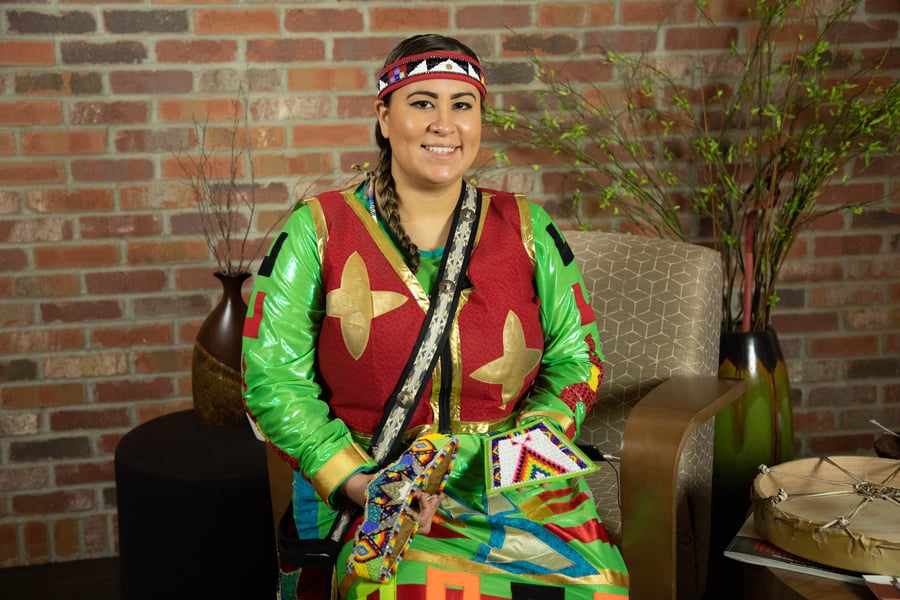 Starr couples this message of cultural revitalization with examples of her own experiences. Through hard work and education, Starr has learned to bead, work with parfleche, and make hand drums. "I want to be a good role model for Native Americans," she insists, "even though you don't have this [culture] in your family — you could be the first one — you can self-motivate yourself to do that. You can create change, too."
Starr couples this message of cultural revitalization with examples of her own experiences. Through hard work and education, Starr has learned to bead, work with parfleche, and make hand drums. "I want to be a good role model for Native Americans," she insists, "even though you don't have this [culture] in your family — you could be the first one — you can self-motivate yourself to do that. You can create change, too."
Finally, it is essential for Starr that people understand that Native Americans are not gone; they are not a people of the past. "We are a living breathing culture … we adapt, we evolve, we change as we move forward through time."
We're on a mission to spread healing by telling the beautiful and the tough stories that come from the Native American experience. Help us spread healing today and inspire hope. #StorytellingHeals
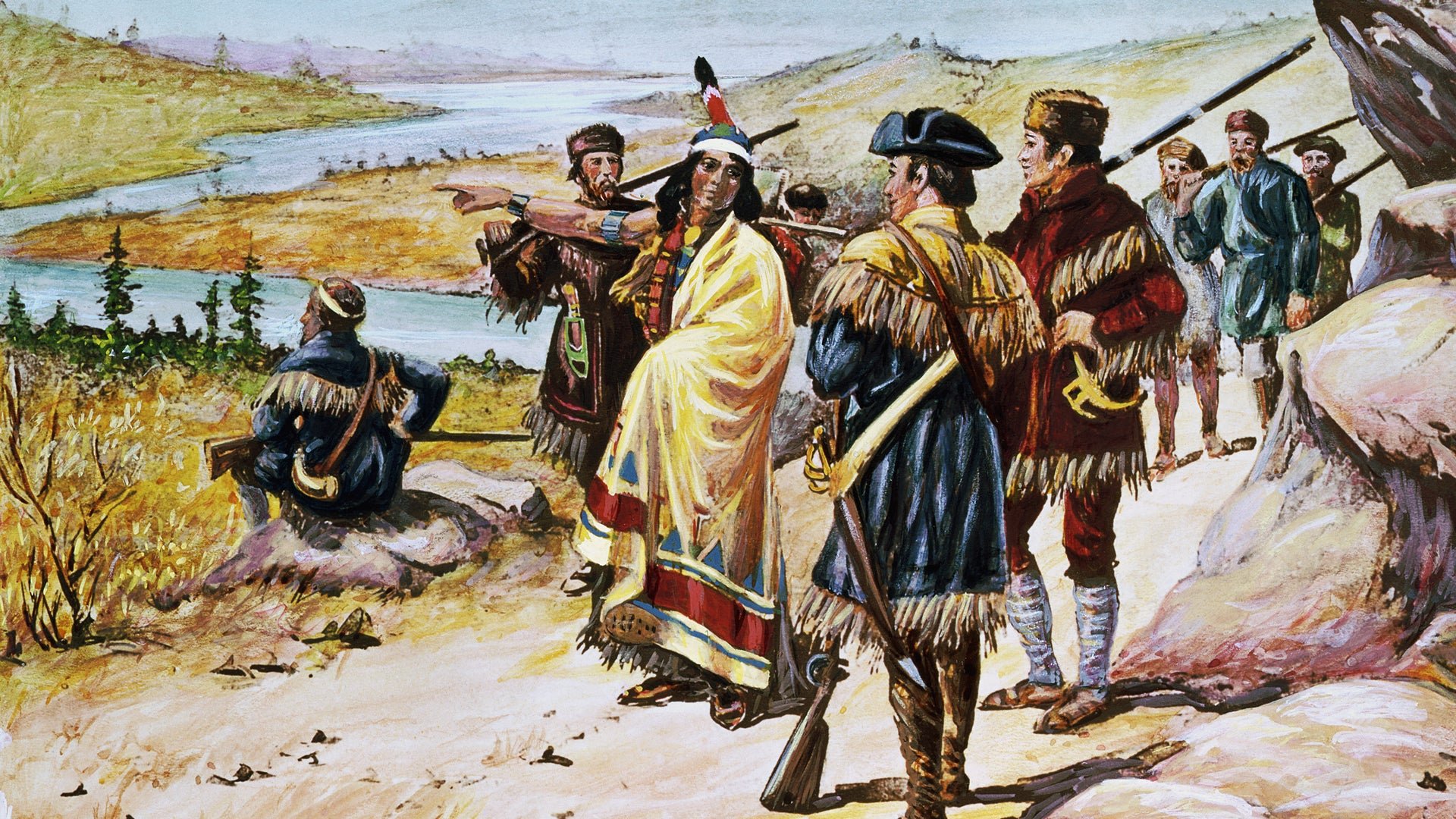
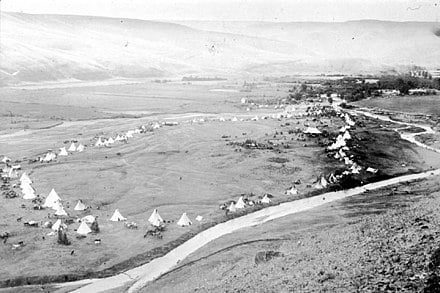

COMMENTS